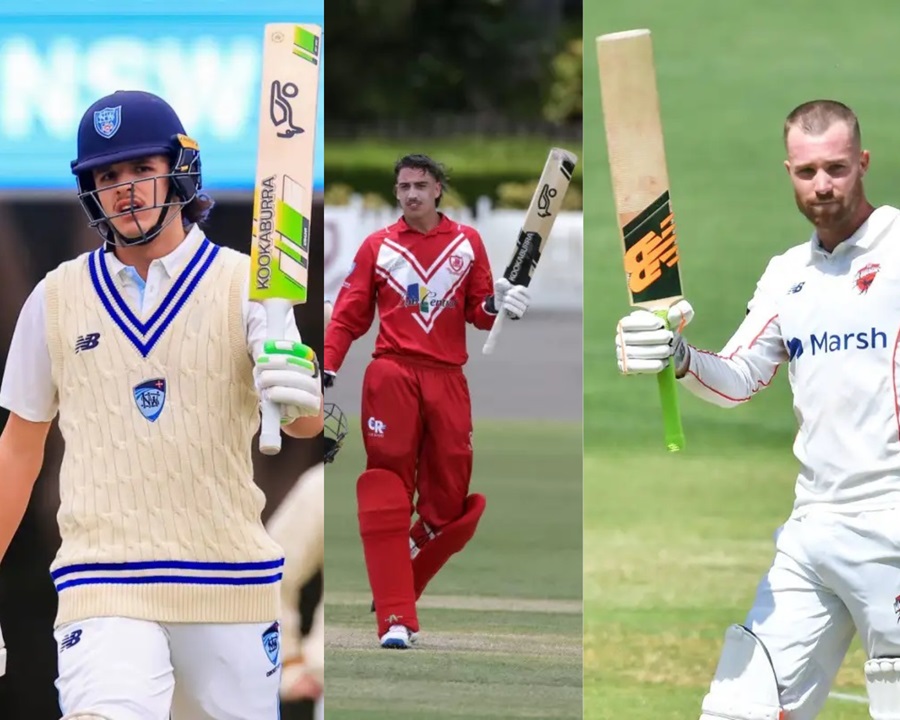Is denying a cricketer the opportunity to play a restraint of trade?
Paul Ryan | October 15, 2024

There’s always great talk from former grade players about how much they loved playing against state and test players when they were available for grade cricket. Back then, it happened a lot more than it does now, mostly because the playing schedule doesn’t allow it. But what really frustrates people is when state and test players are available and still don’t play.
Think about where state and test players got their start—where they first caught a selector’s eye and built their reputation. Marnus Labuschagne, for example, always turns out for Redlands Tigers in Queensland Cricket, and you can see from the footage how much it means to him to play well for his teammates and club.
It was a big deal to play against those top-tier players. If you did well, it boosted your confidence. Sometimes, a state or test player might even put in a quiet word to a selector about someone they thought had potential. It could make all the difference.
I’ve heard Western Australia is quite proactive and encouraging about making sure their contracted players turn out for premier cricket whenever they can. If that’s true, it’s fantastic—and maybe it’s part of the reason they’re Australia’s top cricketing state right now.
So, here’s the question: is it the players who choose not to play premier cricket when they’re available, or is it the coaches, management, or physios making that call for them?
There’s so much money and opportunity in the game today, which brings me to another point.
Last week, Daniel Drew got a duck in the first innings of South Australia’s Shield game against NSW. But under pressure in the second innings, he fought back to make 46 not out off 141 balls, along with his captain Nathan McSweeney’s unbeaten 127, to deny NSW an outright win. Then, just a two days later, back in Adelaide, Drew hit 143 not out as captain of Western Torrens to help his team win a Premier Cricket one-day game. His 2nd innings of 46 not out and that 143 would give him plenty of confidence heading into his next Shield match.
Now, let’s compare that with NSW opener Nic Maddinson, who scored just 12 and 8 in the same Shield game. Two days later Maddinson was denied an opportunity to play for his club team, Eastern Suburbs, on the Sunday, despite being available. Meanwhile, Eastern Suburbs played two T20s that day, one in the morning and one in the afternoon, meaning Maddinson missed two chances to get some much-needed batting time.
On the other hand, one of NSW’s contracted players, Blake Nikitaras—who’s competing with Maddinson for the opening spot—had a fantastic weekend. He opened the batting for St George, scored 107 in their win in a one-day game on Saturday, and followed it up with scores of 86 not out and 64 in St George’s two T20 wins on Sunday.
So, while Maddinson was recovering from the Shield game, Nikitaras was piling on the runs.
NSW’s next Shield game is against Victoria on October 20 at the MCG, and Maddinson will likely be opening the batting along with Sam Konstas. I’ll be cheering for him for many reasons and one being I think Nic should be in line to open the batting for Australian in the first test v India.
But if he’s unlucky, get a peach of a ball, a bad decision or an untimely run out and gets out cheaply, what happens? And what if Nikitaras scores another ton in his next club game? Suddenly, Maddinson’s spot is under pressure, and you’ve got to ask—who made the call to deny him those batting opportunities for Eastern Suburbs?
In a professional world, is that a restraint of trade?
It’s worth noting that Sam Konstas was the only NSW batter to play Premier Cricket on the Saturday prior to the South Australia Shield game, and he went on to score 152 and 105 in that match.
The 43 balls he faced for Sutherland on the Saturday clearly worked in Sam’s favour.
It makes you wonder—how valuable is the time spent playing for your club when you’re available?


Hi Paul,
You do a great job with this website. I believe with batsman it should be their own call whether they play or not. However with bowlers it is not as easy due to wear and tear over a long season.
Thank You
Well said Paul.
I say play grade, whether you’re a batsmen, bowler or wicket keeper. Give back to the club that supported you and lift the players in your team on game day.
Fear of failure , the incumbent Player may not want to play so if he fails and the challenger does well he wont retain his spot .
Individual consideration is the key as some people just like batting .
Here in Qld the physio pulled the strings on who plays and who doesn’t particularly bowlers.
Hard to compare eras of cricket , today is not better ( fielding is ) or worse just different.
I think it’s important for representative players to never forget where they started and hence play for their clubs where possible. The issue these days is the amount of cricket that is played across the 3 formats and the associated stress on the body. This is particularly important for fast bowlers who need to manage their workload.
Sports Science is an absolute blight on modern sport. When people who couldn't play go to University to get a degree and rise to the top of the decision making process to be able to tell people who can play what they need to do or what they are allowed to do so they can play or rest etc you know the future is bleak. A shield batsmen plays a max of 20 innings and would want at least another 10 in other forms of cricket for not only form but development of their skill set and to put back into the pathways to allow up and coming cricketers to learn from being exposed to the best. They are full time cricketers that get unlimited access to massage, physios, medical and recovery treatments etc as well as insurances, income protection etc. Previous generations did that whilst also holding down some form of job. I understand a fast bowler being restricted during the middle of the season but early season and end of season for finals should be allowed. When millions of dollars is invested in Sports Science both at an educational, political and corporate level the inversion of wisdom becomes the status quo. Are there legal liabilities and consequences for not following sports science directives? There certainly has been a fascination with fast bowlers and limiting their development in pathways due to the fear of 'What could go wrong' with back injuries instead of accepting bowling is a dangerous endeavour no matter ho much science intervenes. How does a bowler develop a skill set without thousands of repetitions? How does a batsmen learn to face 150 km an hour bowling without facing a machine at 150 and risk breaking fingers to do it. Next sports science will say you can only face the machine at a 'Safe Speed' and only a limited amount of deliveries. Most importantly how does a player develop to spend as much time as possible in the middle performing come crunch time unless he spends the same amount of time in terms of blood, sweat and tears in preparation both physically and mentally.